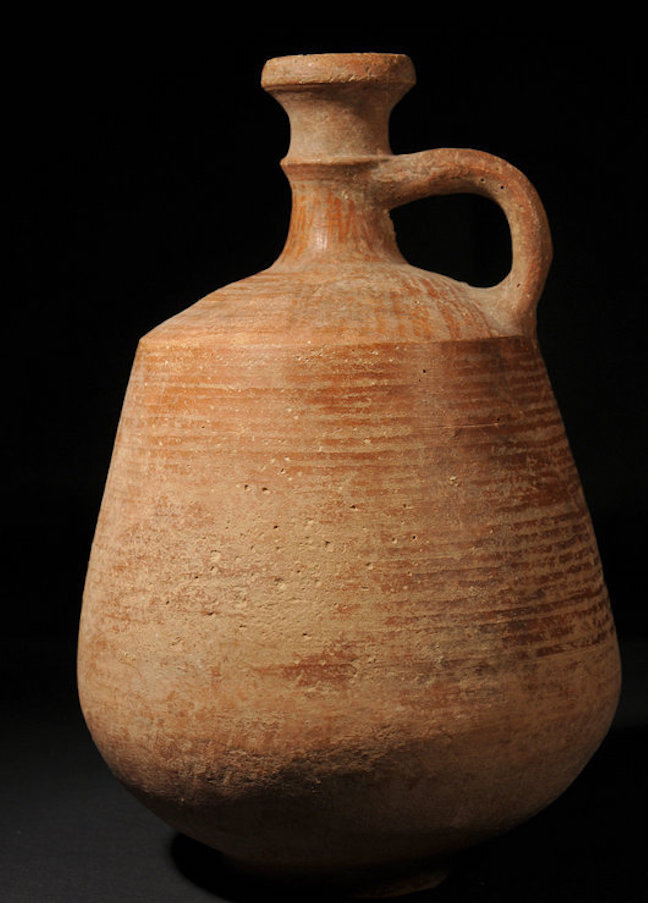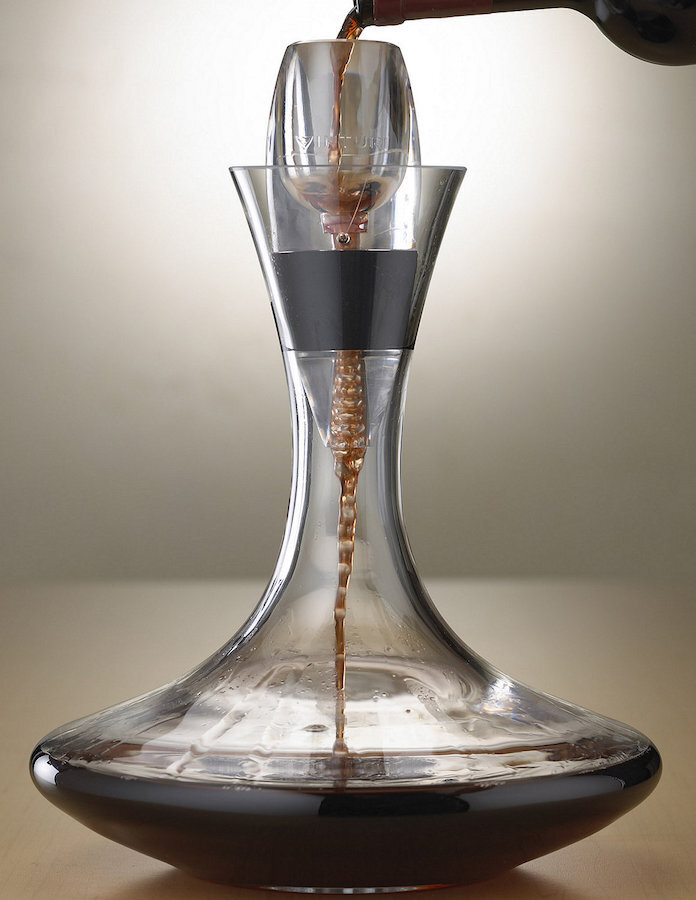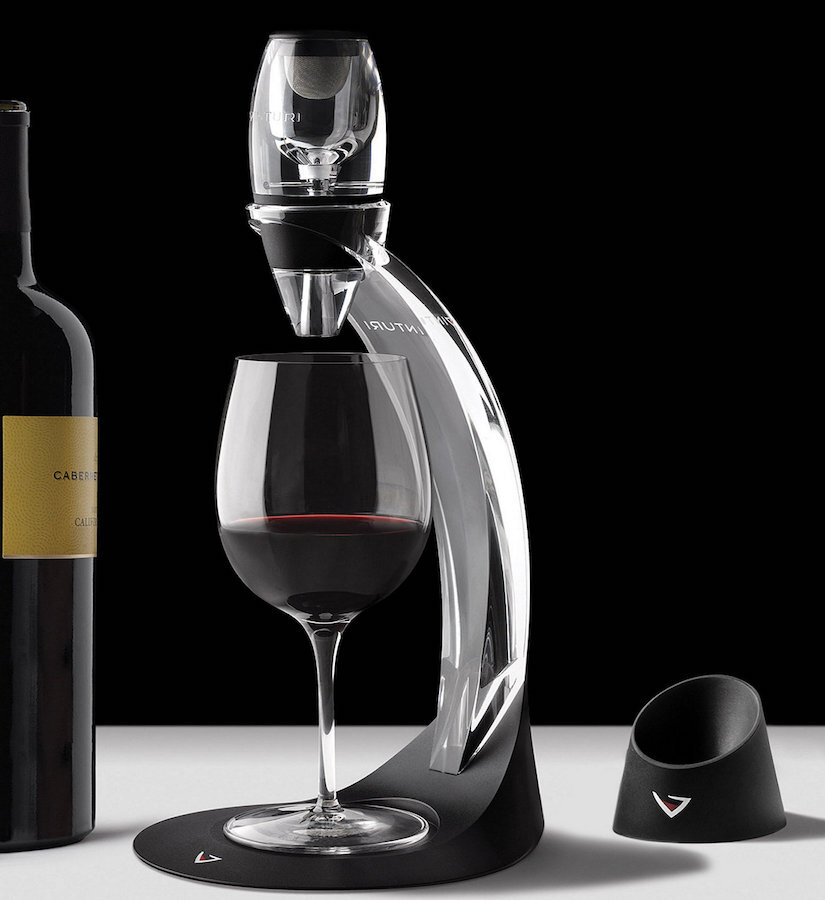Wine Word of the Week: Decanting
We've all been at a fancy restaurant and seen a waiter or Sommelier trot past us with an elaborate, glass contraption that looks like it belongs in a museum. Most likely they’re en route to decant an expensive bottle of wine for a patron. But is the process of decanting all show? And if not, when should a wine be decanted and what exactly does it DO to enhance our enjoyment of wine?
The process of decanting dates back to ancient Rome when wine was fermented in large containers called amphorae. Decanters were used to siphon wine out of amphorae to bring to the table for serving. Since an amphora generally contained a fair amount of sediment at the bottom, the decanting vessel also served to separate the wine from the sediment which, although it poses no health risk, is not very desirable to drink.
Over the years, decanters have been made of various materials including silver, bronze, gold and terra cotta earthenware. During the Renaissance, the Venetians introduced the style of decanter we are most familiar with today. It is typically made of glass and features a thin neck which expands into a broader base which maximizes the wine's oxygen exposure.
Today, a decanter serves two primary purposes: (1) to separate older wines, usually red wines or Port, from any sediment at the bottom of a bottle which occurs naturally as wines age, and (2) to aerate younger wines, both white and red, which tames their tannin and helps them "open up," and become more expressive and approachable.
While most tannic, young red wines such as Cabernet Sauvignon, Cabernet Franc, Syrah, Nebbiolo, Sangiovese, Malbec, and Merlot will benefit from decanting, older wines can be more fragile. In fact, it's a good idea to taste an older wine (10-15+ years old) before making the decision to decant. If you like the way it tastes right out of the bottle, you may want to avoid the decanting process altogether. If the wine is very "closed" or unexpressive and/or contains a significant amount of sediment, then you will probably want to proceed with decanting it.
The process of decanting is quite easy to perform and you don't need a fancy decanter to do it - a big glass vase or water pitcher will work just fine! Also, if you only plan on enjoying a glass or two, the Vinturi Wine Aerator is also great choice at a great price. If you would like to go ahead and decant a bottle yourself, just follow the steps below but be sure to take note, decanting a young bottle is different from decanting an older bottle:
If the wine(s) you want to decant are stored on their side in a cellar or wine fridge, be sure to stand the bottle(s) upright for 24-48 hours prior to decanting. This allows the sediment suspended in the liquid to settle to the bottle of the bottle.
Select the decanter (or glass vase or pitcher!) you'd like to use and make sure it is properly cleaned and dried. If you're thinking of investing in a decanter, we really like the ones from Riedel. We've had ours for over 12 years and it does a fabulous job and is easy to clean too.
Remove the capsule and cork from the bottle of wine and wipe any dust or schmutz from the neck and top of the bottle.
If you're decanting a young bottle of wine (under 5 yrs), invert the opened bottle of wine over the decanting vessel and let it flow freely into the decanter. The more "sloshy" this process is, the better (without spilling the wine of course). Young wines really benefit from that infusion of oxygen! As for timing, you can decant young tannic wines up to 2-3 hours before serving, however, if you'd like to experience more of the wine's natural evolution in the glass (as I like to do) you can decant it just before serving.
If you're decanting an older bottle of wine (10+ yrs), place a candle or the light from your iPhone under the neck of the bottle as you slowly and steadily pour the wine in one continuous stream from the bottle into the decanter. Once you begin to see sediment approach or enter the neck of the bottle - slow your flow or stop pouring altogether depending on how much there is. You don't want any sediment getting into your freshly decanted wine!
Once you've poured the wine into the decanter, discard the bottle and any dredges at the bottom and enjoy your decanted wine!
Other twists on decanting:
For especially youthful, tannic red wines you can "double-decant" them by pouring the wine into a decanter and then right back into the bottle - double the decanting, double the fun!
If you're feeling adventurous, you can also "hyperdecant" your wine (young red wines ONLY!) utilizing a technique introduced in the revolutionary Modernist Cuisine cookbooks (see video below!). Simply empty the bottle of the wine into a blender and blitz for 30-60 seconds. Wait a minute or two for the foam to subside and enjoy!
In order to expedite decanting, you can combine a Vinturi Wine Aerator with a decanter and pour the wine through the device into the glass decanter in order to speed things up.
I hope you enjoyed our latest Wine Word of the Week and if you have any “wine words” you’d like to learn more about, please feel free to share them in the Comments section below. To see previous installments of this segment, please click here and, as always, thanks for reading!






